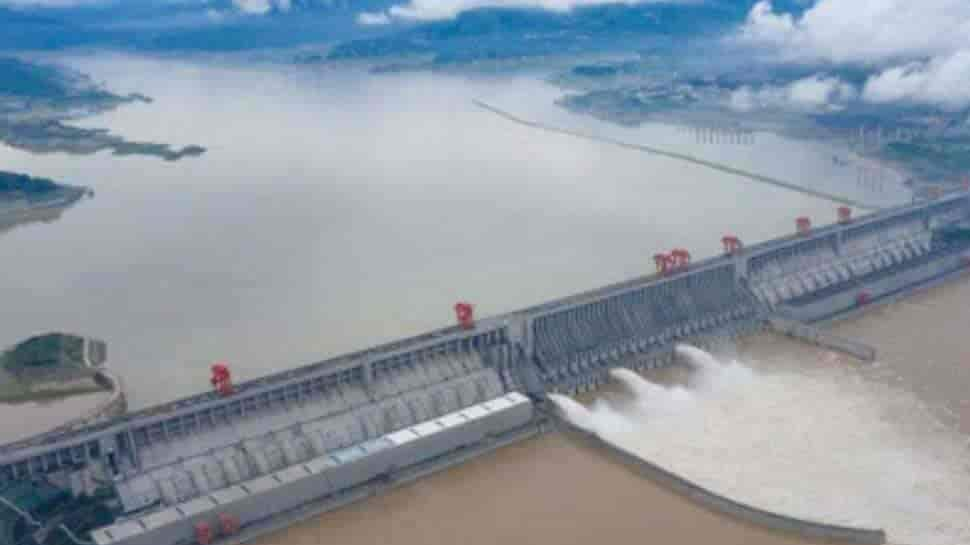
While India-China attention border clashes continue to dominate headlines, a potential conflict is brewing around a dam being built on the Brahmaputra river which originates in Tibet. Transboundary hydro politics, according to experts, can open another front of conflict between the two Asian powers.
The 14th Five-Year Plan (2021-25) for National Economic and Social Development and the Long-Range Objectives, Yarlung Zangbo River hydropower project in Southwest China’s Tibet Autonomous Region has triggered an alarm in India and other downstream countries. The super hydropower dam will boost china’s clean energy requirement as well as the country’s water supply. But such projects will have a massive impact on lower riparian countries, including India. China remains the world’s top dam-builder at home and abroad.
Brahmaputra is one of the largest rivers in the world and rank fifth with respect to its average discharge. The river originates from the Kailash ranges of Himalayas at an elevation of 5300 M. After flowing through Tibet it enters India through Arunachal Pradesh and flows through Assam and Bangladesh before it joins Bay of Bengal. Brahmaputra sub-basin extends over an area of 580,000 sq.km lying in Tibet (China), Bhutan, India and Bangladesh. It is also known as the Yarlung Tsangpo in Tibetan, the Siang/Dihang River in Arunachali, Luit in Assamese, and Jamuna River in Bangla.
According to RFA (Radio Free Asia), the planned project could have three times the capacity of the controversial Three Gorges Dam. But environmental groups and Tibetan rights activists said such projects wreak environmental havoc and have a severe impact on downstream water supplies. “Scientists have warned that constant construction of hydropower dams will lead to earthquakes, landslides and also submerge land and forests under water, which will endanger wildlife”.
“It may also lead to either floods in the area or water shortages. The bottom line is it will cause huge environmental destruction”.
“This new dam was announced with minimal prior consultation with downstream countries, nothing new for China’s treatment of downstream neighbours,” the Mekong expert said.
China has been creating an extensive dam infrastructure- to control how the water flows, where it flows and how much of it flows into the neighbourhood. China being the upper riparian country in the case of Brahmaputra has certain advantages for instance it can control the flow of water by building dams and release excess water in the monsoon seasons that will ultimately cause floods in the northeast Indian states particularly in Assam.
(Shruti Saxena contributed inputs for this article)
Author Profile
- India Writes Network (www.indiawrites.org) is an emerging think tank and a media-publishing company focused on international affairs & the India Story. Centre for Global India Insights is the research arm of India Writes Network. To subscribe to India and the World, write to editor@indiawrites.org. A venture of TGII Media Private Limited, a leading media, publishing and consultancy company, IWN has carved a niche for balanced and exhaustive reporting and analysis of international affairs. Eminent personalities, politicians, diplomats, authors, strategy gurus and news-makers have contributed to India Writes Network, as also “India and the World,” a magazine focused on global affairs.
Latest entries
 DiplomacyOctober 4, 2025UNGA Resolution 2758 Must Not Be Distorted, One-China Principle Brooks No Challenge
DiplomacyOctober 4, 2025UNGA Resolution 2758 Must Not Be Distorted, One-China Principle Brooks No Challenge India and the WorldJuly 26, 2025MPs, diplomats laud Operation Sindoor, call for national unity to combat Pakistan-sponsored terror
India and the WorldJuly 26, 2025MPs, diplomats laud Operation Sindoor, call for national unity to combat Pakistan-sponsored terror India and the WorldJuly 25, 2025When Fire Ends, Diplomacy Begins
India and the WorldJuly 25, 2025When Fire Ends, Diplomacy Begins India and the WorldJuly 16, 2025Operation Sindoor and its Aftermath: India’s Successful Diplomatic Outreach
India and the WorldJuly 16, 2025Operation Sindoor and its Aftermath: India’s Successful Diplomatic Outreach







